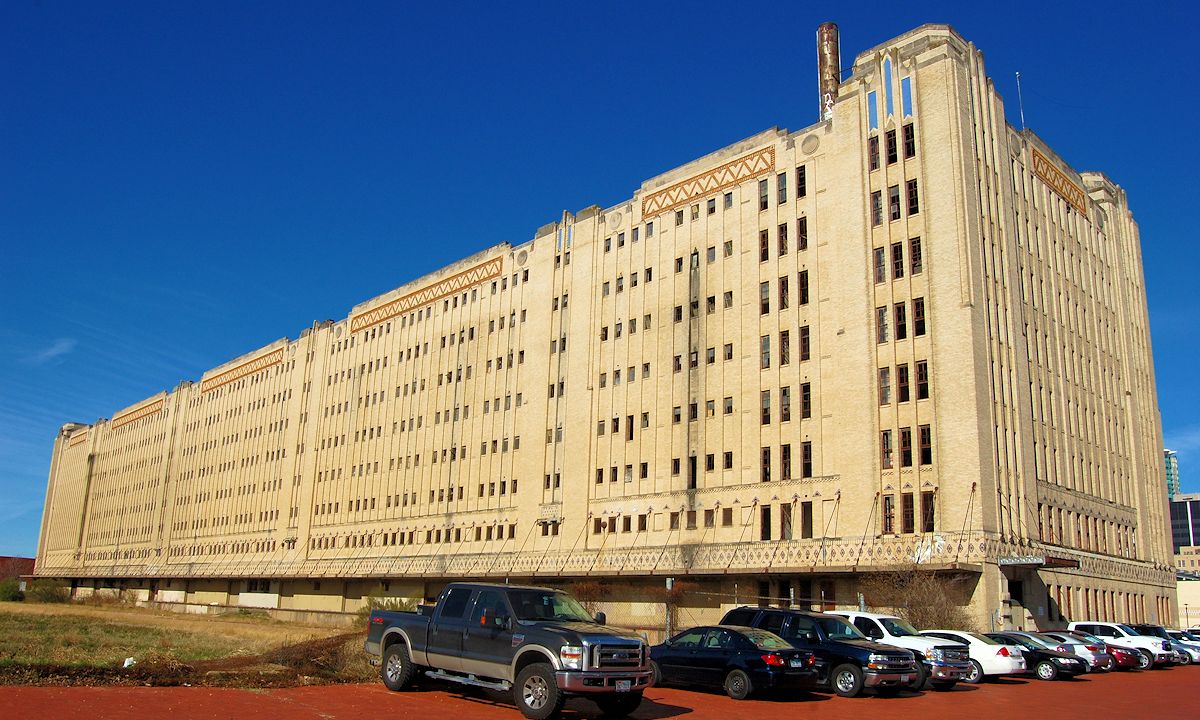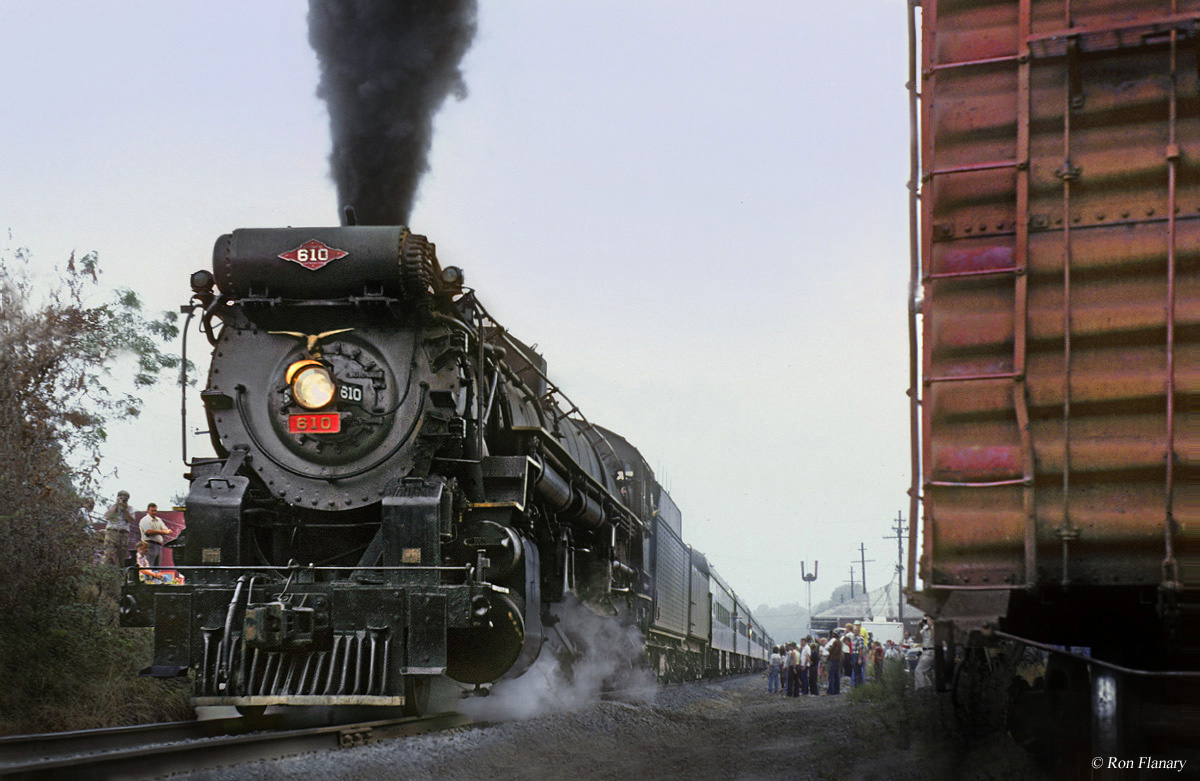In reply to AnthonyGS (Forum Supporter) :
The Texas Pacific Railroad Company was formed in 1871 as part of the post-Civil War "railroad fever" and was supposed to provide a southern transcontinental line, from Marshall, TX to San Diego, CA. It was originally planned to be constructed as a very unusual 42" gauge railroad, until the state of Texas stepped in and mandated that it be constructed to standard gauge. Construction within the state of Texas was fairly rapid (250 miles in ten months), partially due to the purchase of the Southern Pacific Railroad Company (a different SP, since at the time what we now know as Southern Pacific was still the Central Pacific) and the Southern Transcontinental Railroad Company in 1872 and the Memphis, El Paso & Pacific Railroad Company in 1873. Tom Scott, formerly of the Pennsylvania Railroad became president in 1872, and the name was changed via an act of Congress to the Texas & Pacific Railway.
The first rail line was opened between Longview and Dallas in July of 1873, and in December that year, the line from Marshall to Texarkana was placed in service. But westward expansion stalled out and the railroad encountered financial difficulties in during the Panic of 1873, which would result in the T&P going into receivership in 1875.
One of its last projects was the 1874 Trinity River bridge in Dallas to handle the massive livestock traffic originating on the many ranches to the west. Nearby Fort Worth, a big livestock marketing center, became increasingly dissatisfied with the lack of a T&P connection. Frustrated with the cash-strapped railroad, farmers and stockmen organized and graded the 30-mile stretch between the two cities and laid down ties, allowing the first T&P train to enter in July 1876. It is ironic that Fort Worth, which had to pay to get into the T&P family, eventually became the operating hub for the system. It grew rapidly as a transportation enterprise owing to its strategic importance in northeast Texas and its connections through Texarkana and Shreveport to major cities such as St. Louis, New Orleans, and Atlanta.
Jay Gould stepped in in 1879 to get the T&P back on it's feet, and the Texas & Pacific made it only as far west as Sierra Blanca, TX, where it met up with the Galveston, Harrison & San Antonio Railroad, which was a subsidiary of the Southern Pacific. This connection with the SP in 1881 did construct a southern transcontinental, just not under one roof as planned originally. Afterwards, the T&P turned eastward and completed its own line from Waskom to Shreveport and, of more importance, pushed on to New Orleans by acquiring short railroads and constructing connecting segments. Other than building and acquiring several feeder lines, the New Orleans-Dallas-El Paso route represented the geographic limits of the T&P, although the Marshall-Texarkana stretch was probably the busiest segment since it was used by both east-west and north-south traffic from connecting MP lines. The year 1881 also saw the opening of the line to Abilene, Texas. One of Gould’s first moves, in 1881, was also to build a line north from Fort Worth to Sherman, giving T&P a second route to Texarkana as well as a direct connection at Denison, Texas, with the recently completed Missouri, Kansas & Texas, which Gould had acquired in 1880.
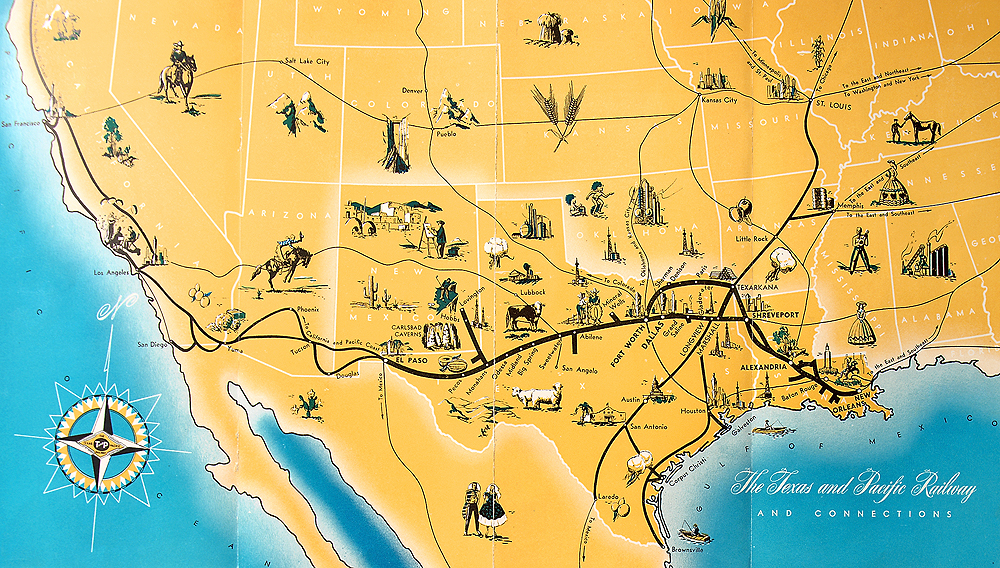
As part of Jay Gould's involvement with the T&P, he leased the T&P to the Missouri Pacific, which he had control of. The lease only ended for four years, but the Texas & Pacific would keep friendly relations with Missouri Pacific through the entirety of its existence. In fact, in 1928, the Missouri Pacific would end up in control of the T&P again when they ended up purchasing the majority stock in the T&P. The T&P continued to operate under an independent identity, but you could certainly see that as time went on, their appearances started to gravitate towards the Missouri Pacific's, particularly in the diesel era.
The later T&P steam power tended to have a very distinctive T&P look: flared smoke stack, big Elesco feedwater heater, twin air pumps on the front deck with angled sheetmetal covers, and the big red diamond T&P logo over the smokebox. Like parent company Missouri Pacific, they ignored the invention of the articulated steam locomotive. They stuck mostly to some tea-kettle Ten-Wheelers, Mikados, Pacifics and Mountains. But in 1925, they became the first railroad to purchase a large order of the 2-10-4 wheel arrangement (ATSF had had the first, #3829, six years earlier but it was a one-of-one and ATSF had let the wheel arrangement lapse into obscurity) and so it was determined that a 2-10-4 was a Texas-type (except on the CB&Q, where they called it a Colorado-type)
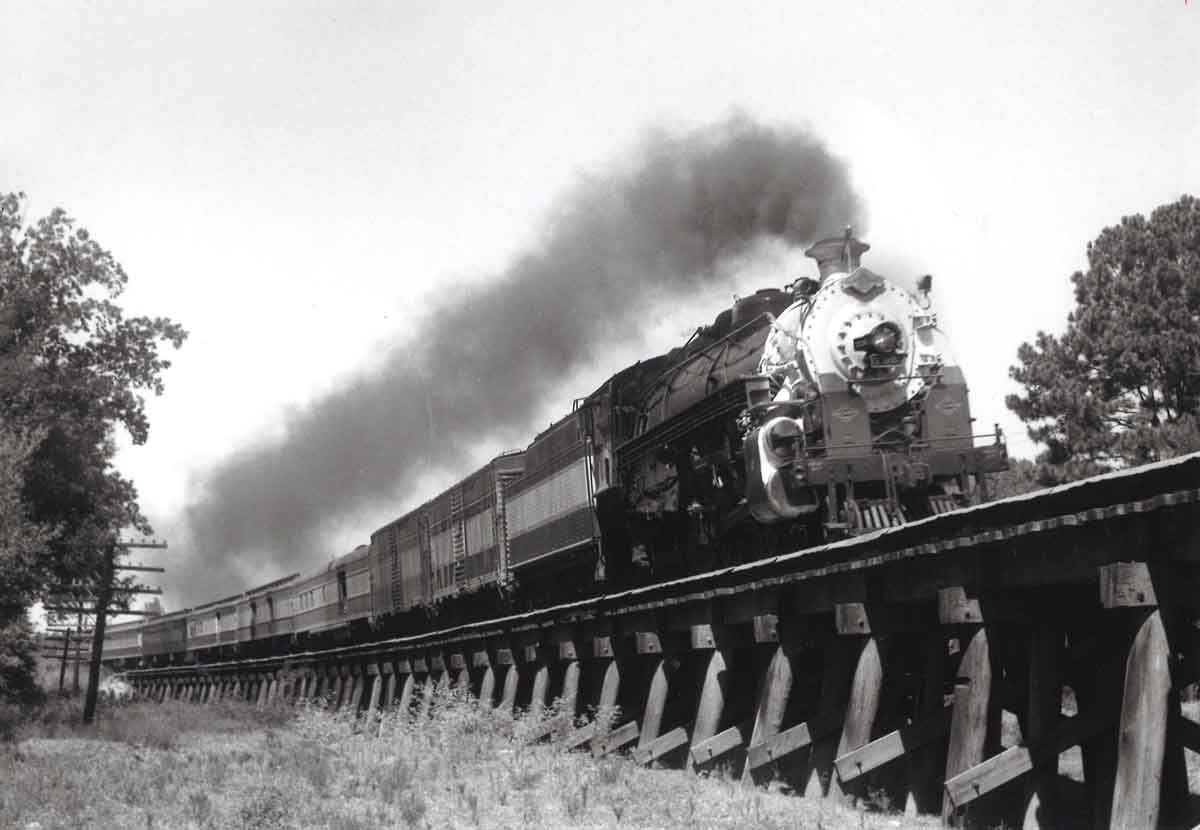
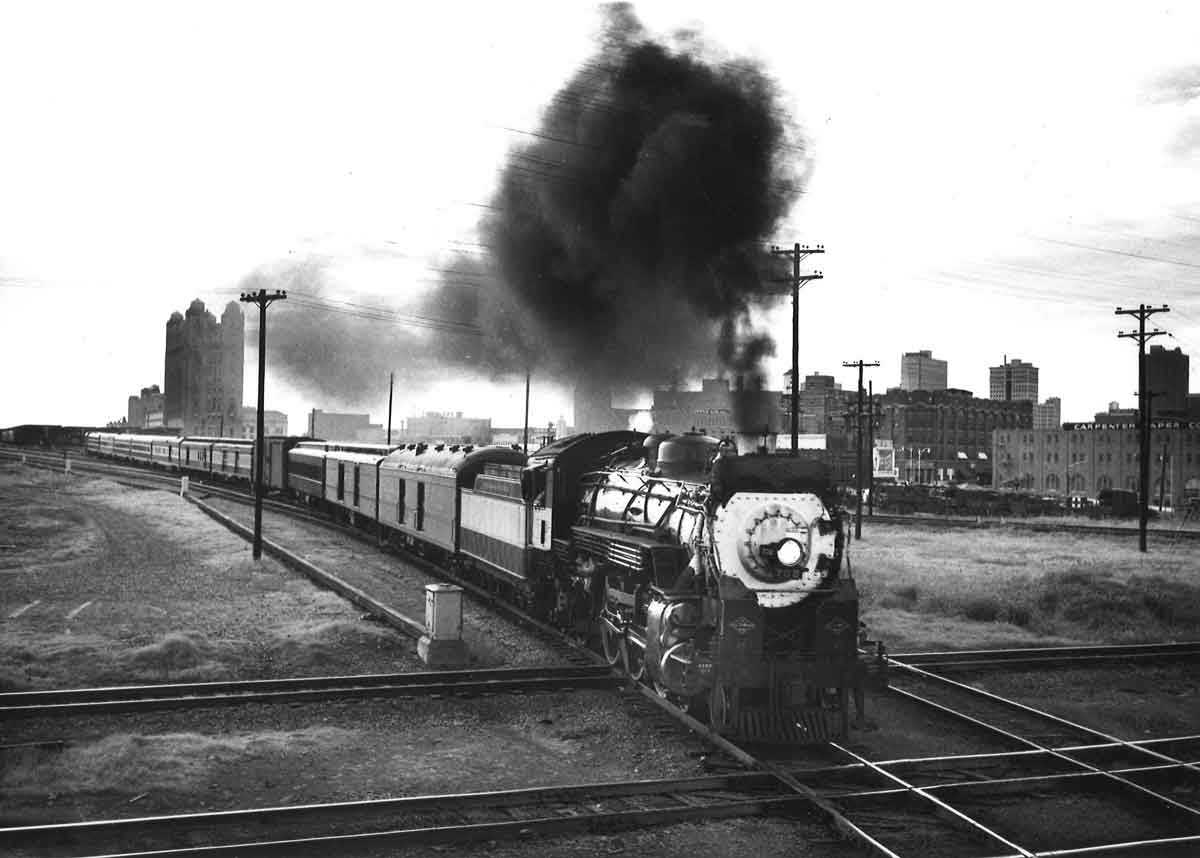
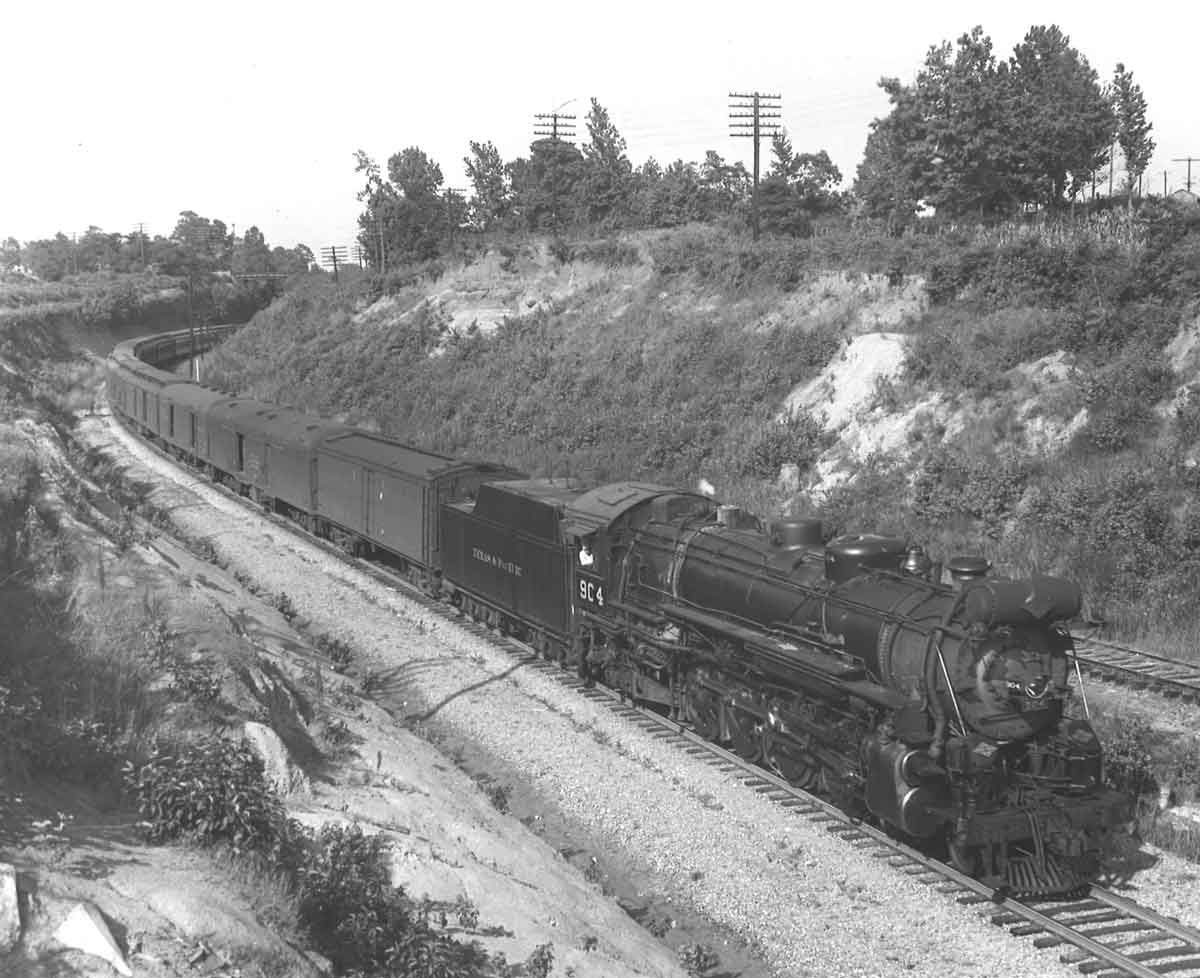
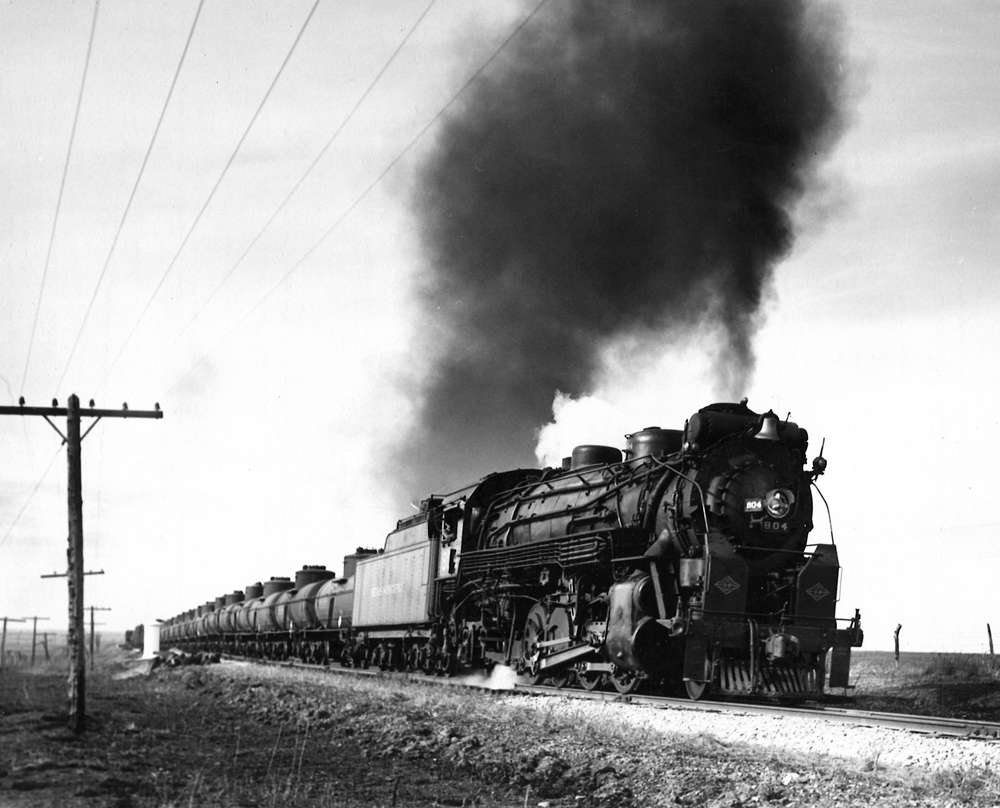
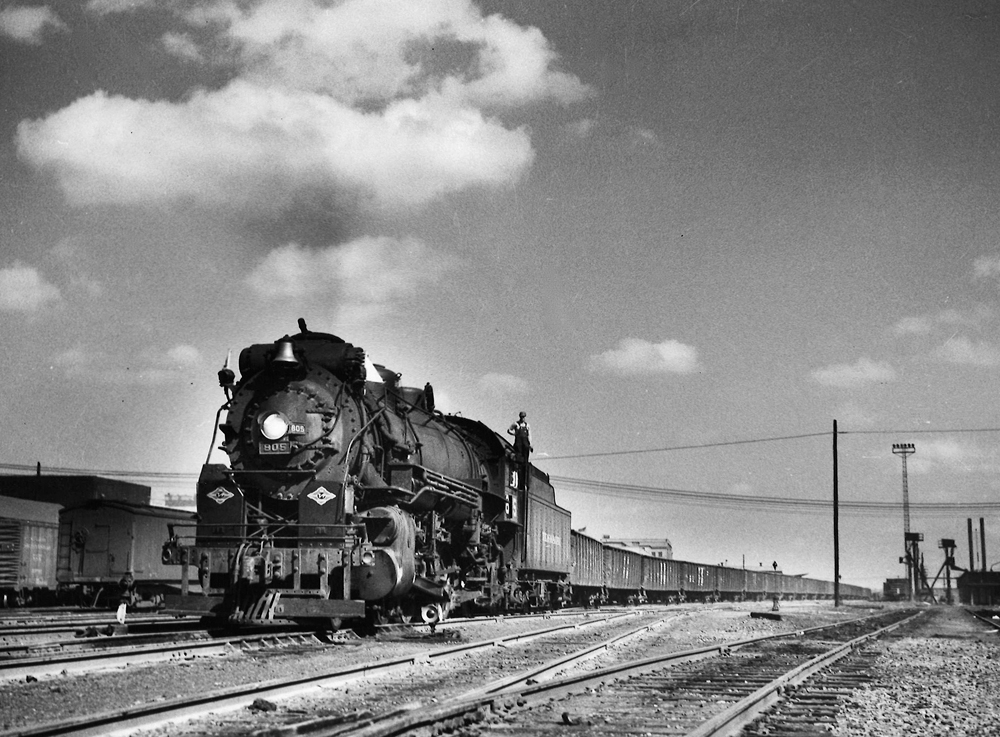
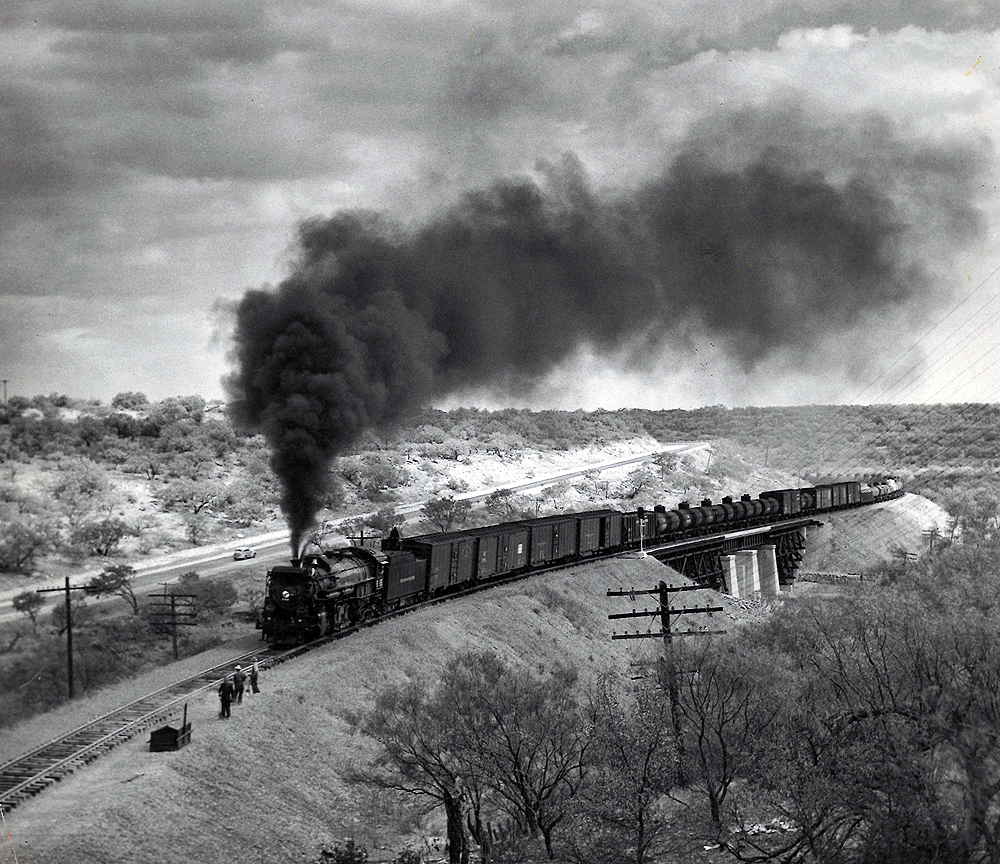

Being a Texas-based railroad, the Texas & Pacific's traffic was obviously based heavily on livestock and oil, although Louisiana also did a bustling business in gravel in the 1950s and 1960s as well. During WWII, the Texas & Pacific, like the Missouri Pacific and the Frisco, basically functioned as a rolling pipeline, endless strings of black oil tankers headed to ports and military bases. The T&P was, on paper, somewhat of an also ran in the passenger industry but did have several named trains that had healthy reputations. These included the joint MP-T&P Texas Eagle from St. Louis to Galveston/El Paso/San Antonio/Mexico City with an SP connection to San Diego and the New Orleans-Fort Worth Louisiana Eagle.
Immediately after WWII, much like the parent MP, the T&P began aggressively dieselizing, with EMD switchers in '46, EMD E7s in '47 and EMD F7s in '49. By 1953, the curtain had closed on Texas & Pacific steam. One 4-6-0, two 2-10-4s, two 4-6-2s and a single 2-8-2 escaped the immediate scrapping, only for one 2-10-4, #638, to be scrapped by the city of Dallas after vandalism, and the Pacifics and Mikes were scrapped in the '60s after the dissolution of Paulsen Spence's Louisiana Eastern. T&P diesels came in two separate liveries: the passenger power and cab units used Missouri Pacific's silver, cream and medium blue (so that their jointly operated passenger trains looked better) and a yellow and black for freight road switchers.

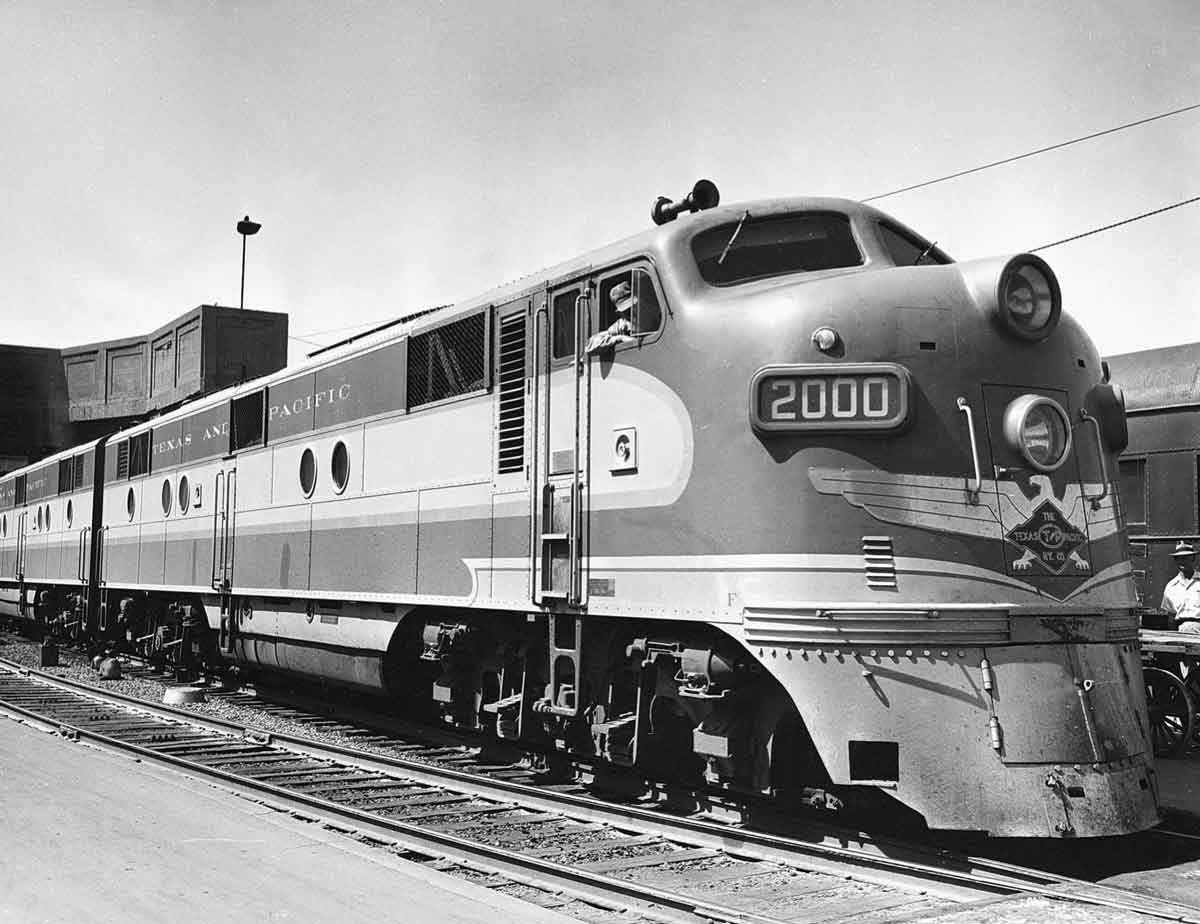
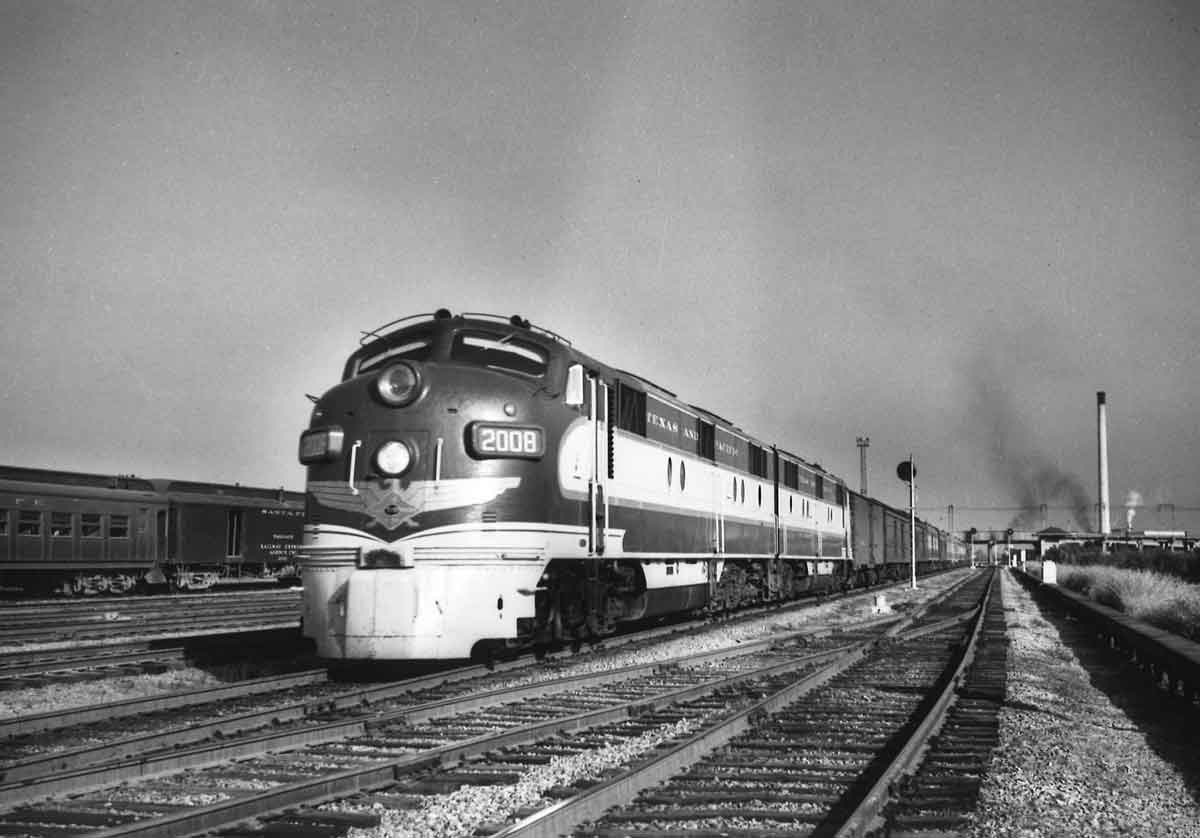
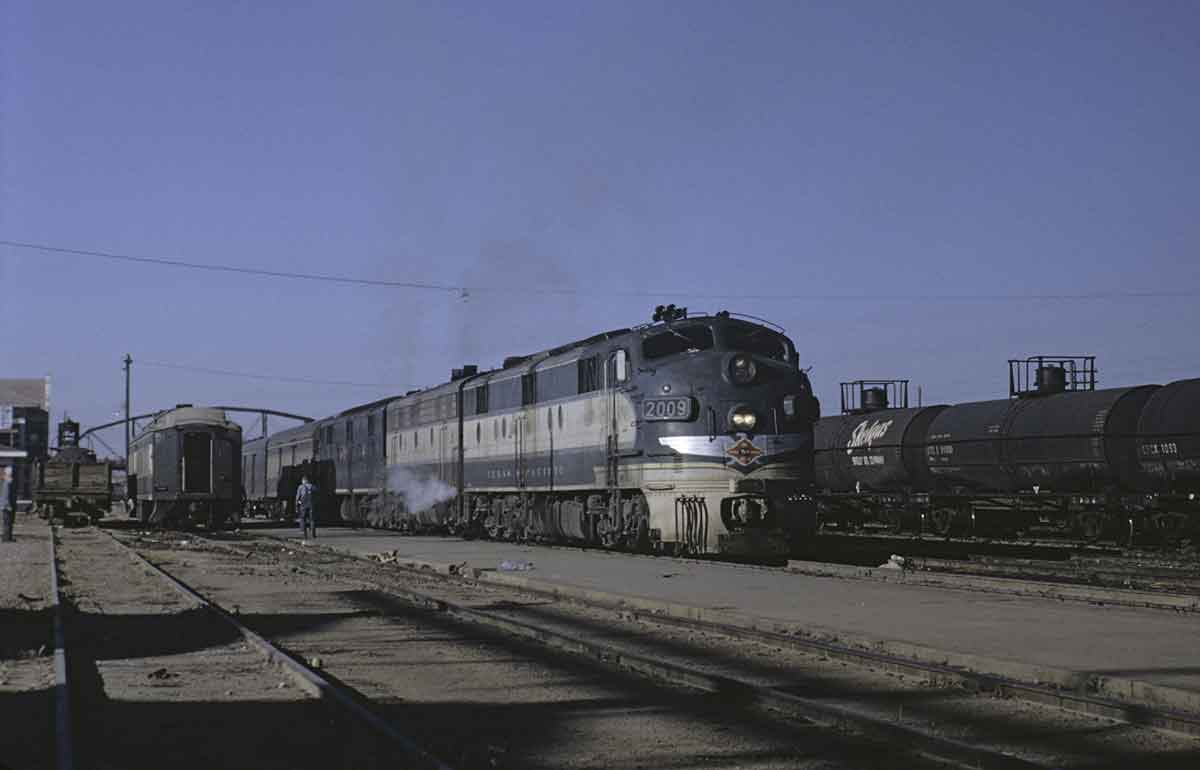
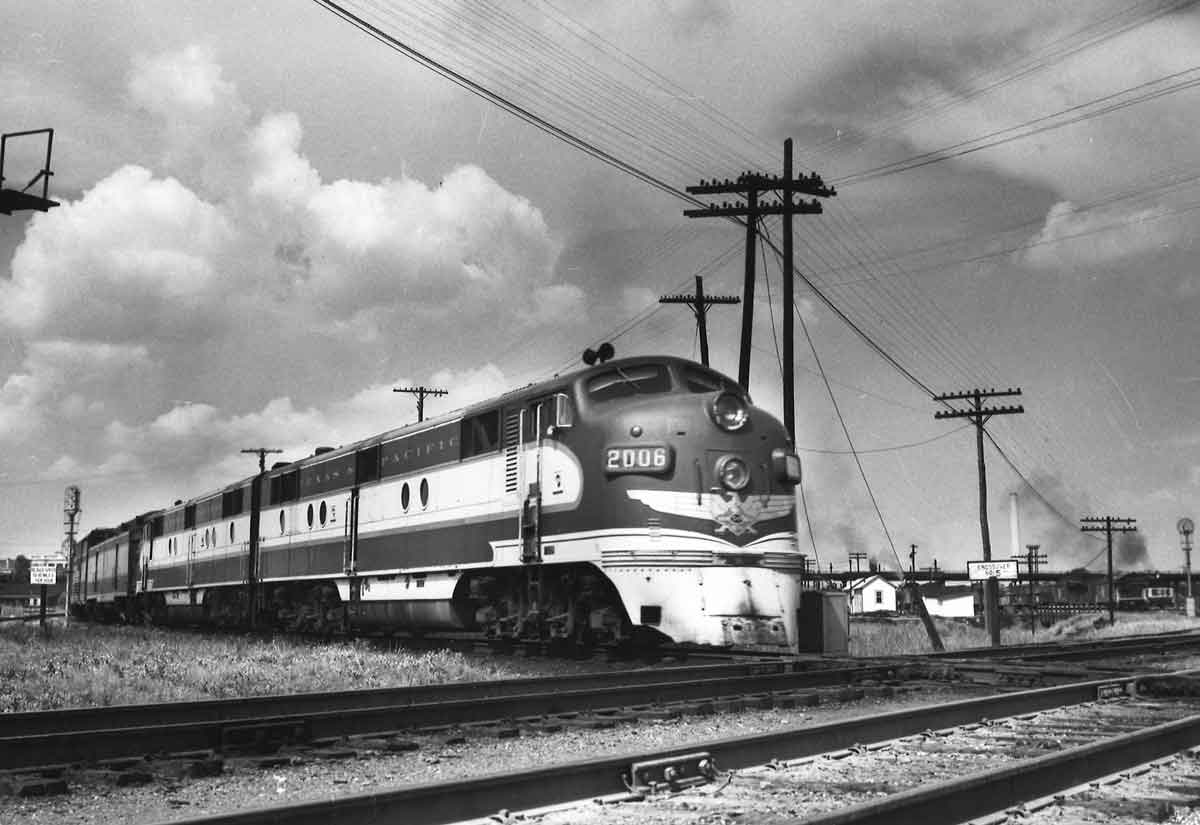
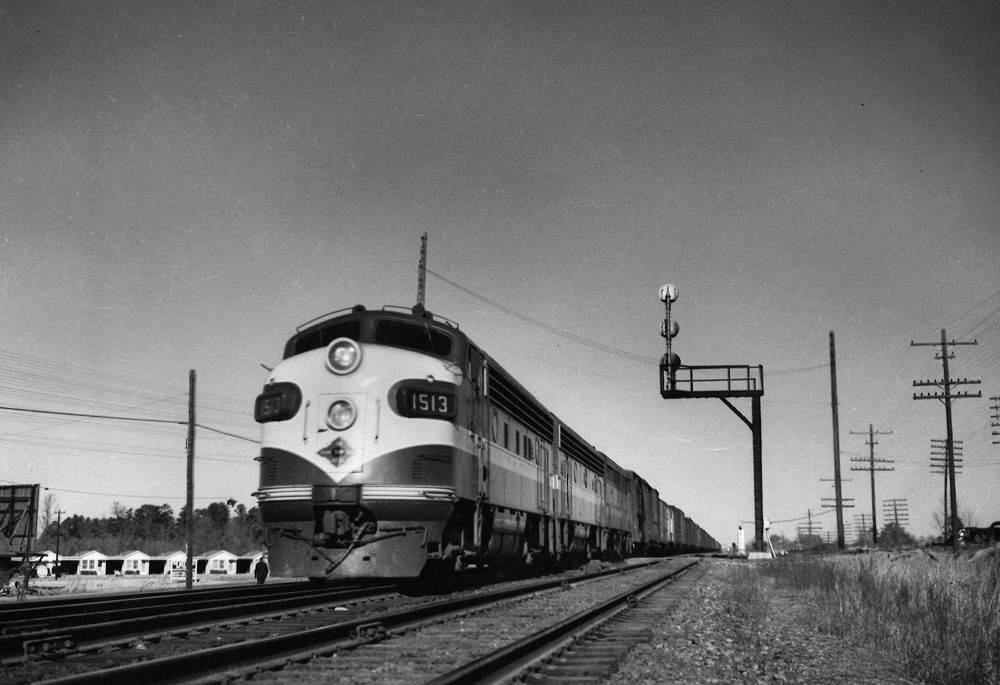
There was an amusing blip in the return of steam power on the Texas & Pacific in 1957 and 1958. When flooding from the Red River west of Alexandria, Louisiana, covered Texas & Pacific’s main line in 1957, the dieselized T&P borrowed a 2-8-2 from Fort Worth & Denver to drag trains through the water that would damage traction motors on diesel-electrics. To guard against a repeat, T&P in January 1958 bought a different FW&D Mikado and gave it the number 400, and it did end up seeing service in 1958. Today, that locomotive is preserved at the old T&P depot in Marshall Texas.
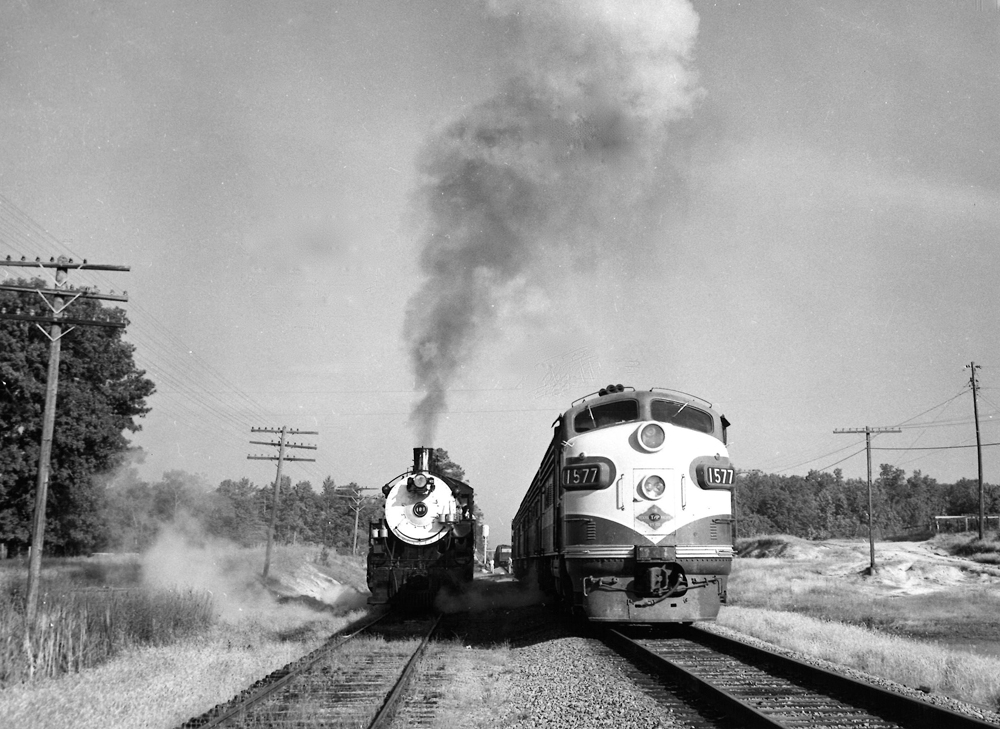
In 1956, the T&P, as a separate entity, began living on borrowed time. MP began systematic purchases of T&P stock with a goal of 80 percent ownership that would allow consolidated tax returns for the two companies. Ironically, one of the last large blocks of stock included 12,000 shares from the estate of Frank Gould, grandson of Jay Gould. By 1957, MP owned 77 percent of T&P and there was talk of merger but, on public perception grounds, it was not pursued. Still, the identities began to blur further, with later T&P GP18s wearing the Missouri Pacific livery and lettered for Texas Pacific Lines. In 1976, the semi-independent status of T&P was finally brought to an end after a 30-year legal battle for recapitalization of the MP system’s holding company. In the end, the new Missouri Pacific Corp. absorbed its three major railroads, MP, T&P, and Chicago & Eastern Illinois.
In a slice of irony, the Fort Worth-Sierra Blanca line that represented so much of Jay Gould’s dreams in the 1880s became a key segment in one of the nation’s premier transcontinental routes in 1996 when Union Pacific, after swallowing up Missouri Pacific and Western Pacific in 1982, also acquired Southern Pacific. The ex-T&P line between Texarkana and El Paso is an extremely attractive route, as it is almost 250 miles shorter than the competing line using Cotton Belt and Sunset Route lines, thus providing some final vindication for the ghost of Gould over his one-time nemesis, C. P. Huntington.



































